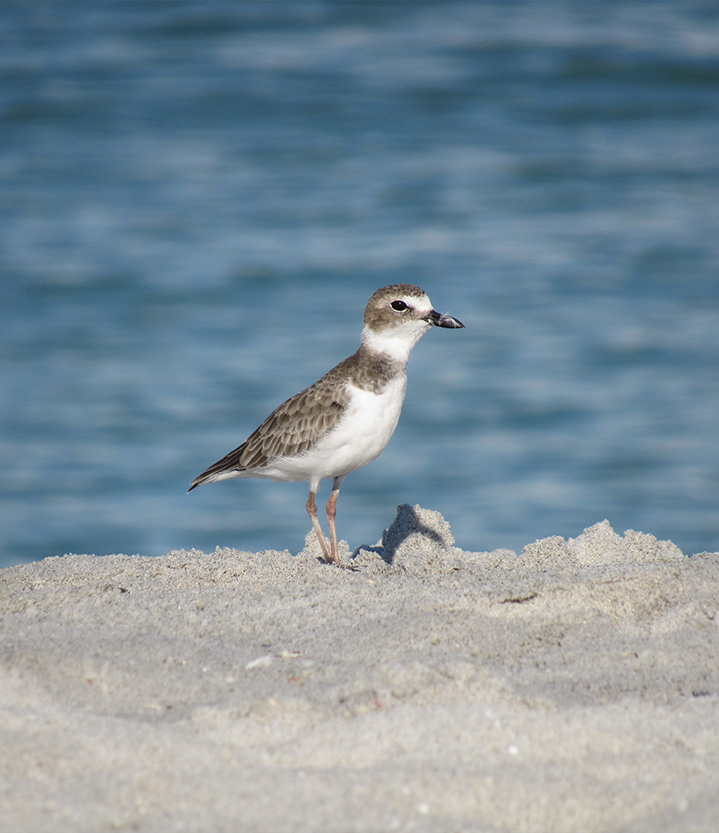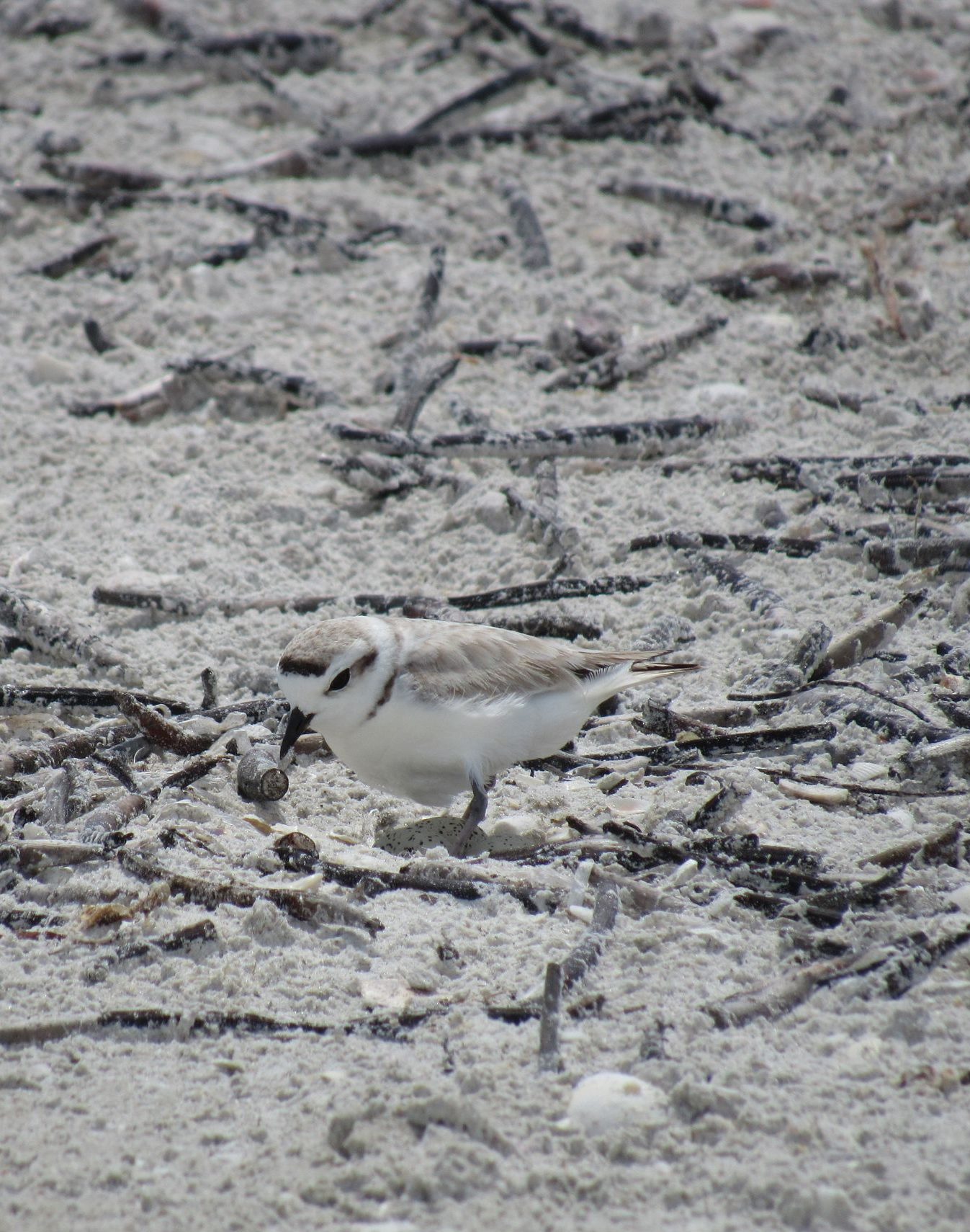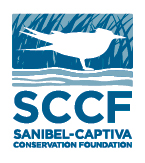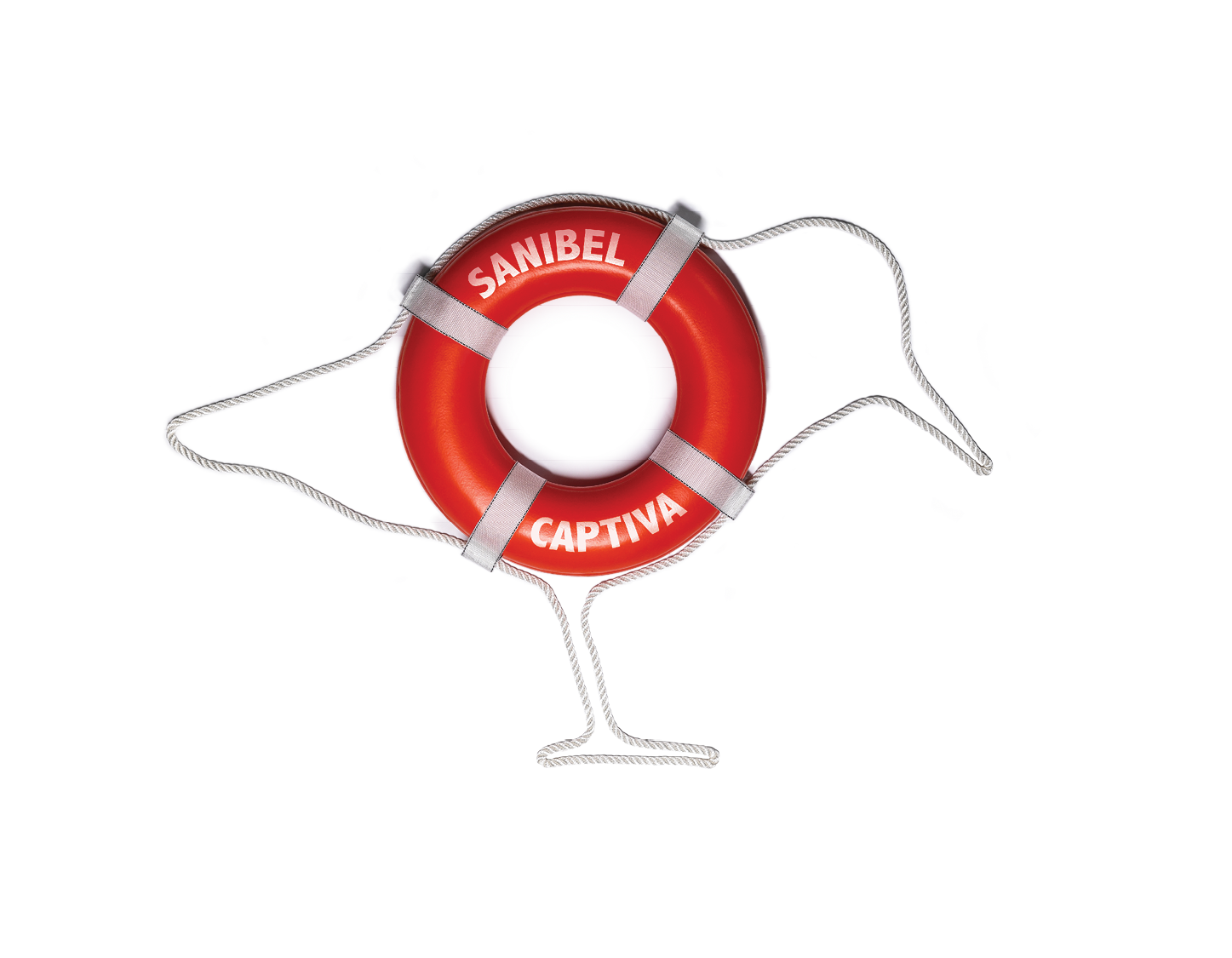
Our islands are a crucial nesting site for snowy plovers, Wilson’s plovers, and least terns from February through August. Many migratory species also depend on the shores of Sanibel and Captiva for staging sites to refuel while on migration. During the spring and fall migrations, millions of shorebirds make the extraordinary journey to Florida. Many of these birds have flown hundreds or thousands of miles before reaching our beaches. They arrive exhausted and hungry and need a safe beach to refuel before continuing their migration.
Shorebird populations are in decline worldwide due to habitat loss compounded by increased threats from pollution of coastal waters, high rates of predation, climate change, and other factors. You can help these fragile populations survive by keeping them in mind when you hit the beach.
Shorebird populations are in decline worldwide due to habitat loss compounded by increased threats from pollution of coastal waters, high rates of predation, climate change, and other factors. You can help these fragile populations survive by keeping them in mind when you hit the beach.

WHAT TO DO DURING YOUR BEACH VISIT

Keep pets leashed. Not only can off-leash dogs destroy nests and kill chicks, but even running and playing behavior disturbs migrating birds because they view dogs as predators, and often respond by flying away. This forces birds to expend valuable energy, which reduces the amount of time they can spend resting and feeding. Chicks must constantly forage to gain enough weight to fledge in time, so any time taken away from foraging is detrimental to their survival.
Never chase birds. Walk around birds to avoid flushing them and never chase birds for fun or for photos, as this forces them to expend precious energy they can’t afford. Predators are alert to movement, so by flushing a bird, you may inadvertently help predators notice birds that would otherwise have remained camouflaged.
Properly dispose of trash. Not only does litter attract predators, but shorebirds can ingest or become entangled by discarded trash and fishing line.
Respect signed nesting areas. Plover nests are really difficult to see, so the posted areas prevent beachgoers from accidentally trampling the eggs in a nest.
Be a respectful photographer. Don’t disturb or draw excessive attention to nesting areas or nesting birds. See below for additional photography guidelines.
Never chase birds. Walk around birds to avoid flushing them and never chase birds for fun or for photos, as this forces them to expend precious energy they can’t afford. Predators are alert to movement, so by flushing a bird, you may inadvertently help predators notice birds that would otherwise have remained camouflaged.
Properly dispose of trash. Not only does litter attract predators, but shorebirds can ingest or become entangled by discarded trash and fishing line.
Respect signed nesting areas. Plover nests are really difficult to see, so the posted areas prevent beachgoers from accidentally trampling the eggs in a nest.
Be a respectful photographer. Don’t disturb or draw excessive attention to nesting areas or nesting birds. See below for additional photography guidelines.
Keep pets leashed. Not only can off-leash dogs destroy nests and kill chicks, but even running and playing behavior disturbs migrating birds because they view dogs as predators, and often respond by flying away. This forces birds to expend valuable energy, which reduces the amount of time they can spend resting and feeding. Chicks must constantly forage to gain enough weight to fledge in time, so any time taken away from foraging is detrimental to their survival.
Never chase birds. Walk around birds to avoid flushing them and never chase birds for fun or for photos, as this forces them to expend precious energy they can’t afford. Predators are alert to movement, so by flushing a bird, you may inadvertently help predators notice birds that would otherwise have remained camouflaged.
Properly dispose of trash. Not only does litter attract predators, but shorebirds can ingest or become entangled by discarded trash and fishing line.
Respect signed nesting areas. Plover nests are really difficult to see, so the posted areas prevent beachgoers from accidentally trampling the eggs in a nest.
Be a respectful photographer. Don’t disturb or draw excessive attention to nesting areas or nesting birds. See below for additional photography guidelines.
Never chase birds. Walk around birds to avoid flushing them and never chase birds for fun or for photos, as this forces them to expend precious energy they can’t afford. Predators are alert to movement, so by flushing a bird, you may inadvertently help predators notice birds that would otherwise have remained camouflaged.
Properly dispose of trash. Not only does litter attract predators, but shorebirds can ingest or become entangled by discarded trash and fishing line.
Respect signed nesting areas. Plover nests are really difficult to see, so the posted areas prevent beachgoers from accidentally trampling the eggs in a nest.
Be a respectful photographer. Don’t disturb or draw excessive attention to nesting areas or nesting birds. See below for additional photography guidelines.

SHOREBIRD PHOTOGRAPHY GUIDELINES

When photographing a bird on a nest:
- Many shorebird nests are posted or staked off with signs and string to create symbolic fencing. Remain outside the posted area. No part of you or your camera equipment should go beyond the string or signs. If the area around the nest is not staked off, you should remain far enough away to avoid disturbing nesting birds (typically 300 feet). If the birds show any sign of agitation as a result of your presence, please quietly and slowly retreat until the birds no longer appear agitated.
- Never get close enough to cause the bird to leave its nest and back off immediately if you flush a bird. Birds sometimes nest near the edge of a posted boundary, so even if you’re outside the string, if the bird responds to you, you’re too close!
- Make sure there are no predators nearby such as raccoons, cats, and crows that may be attracted to human presence or scent.
- Too much time near the nest may unduly stress the birds. Be considerate and don’t spend more than 10 minutes near the nest. After 10 minutes, all photographers should leave the nest area and wait at least three hours before returning.
- Don’t specify the nest’s exact location when sharing or publishing photos. Advertising the birds’ nesting location may draw additional disturbance to the area.
- Stay at least 100 feet away from the birds.
- Wait for the birds to approach you for closer shots.
- Don’t “push” birds around the beach as you try to get the shot. Birds need to be able to feed and rest without disturbance.
When photographing a bird on a nest:
- Many shorebird nests are posted or staked off with signs and string to create symbolic fencing. Remain outside the posted area. No part of you or your camera equipment should go beyond the string or signs. If the area around the nest is not staked off, you should remain far enough away to avoid disturbing nesting birds (typically 300 feet). If the birds show any sign of agitation as a result of your presence, please quietly and slowly retreat until the birds no longer appear agitated.
- Never get close enough to cause the bird to leave its nest and back off immediately if you flush a bird. Birds sometimes nest near the edge of a posted boundary, so even if you’re outside the string, if the bird responds to you, you’re too close!
- Make sure there are no predators nearby such as raccoons, cats, and crows that may be attracted to human presence or scent.
- Too much time near the nest may unduly stress the birds. Be considerate and don’t spend more than 10 minutes near the nest. After 10 minutes, all photographers should leave the nest area and wait at least three hours before returning.
- Don’t specify the nest’s exact location when sharing or publishing photos. Advertising the birds’ nesting location may draw additional disturbance to the area.
- Stay at least 100 feet away from the birds.
- Wait for the birds to approach you for closer shots.
- Don’t “push” birds around the beach as you try to get the shot. Birds need to be able to feed and rest without disturbance.




